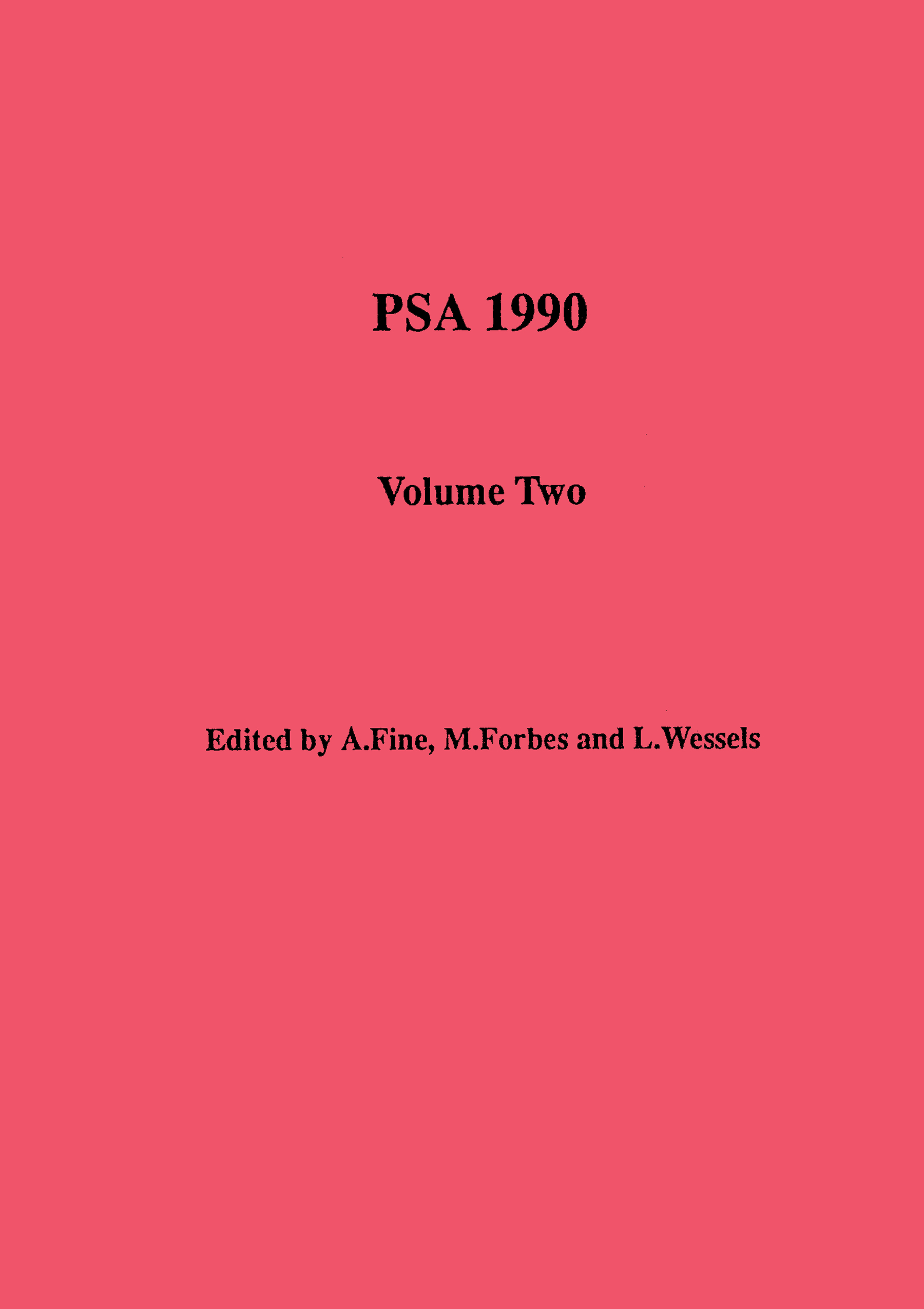Article contents
Theoretical Realism and Theoretical Equivalence
Published online by Cambridge University Press: 28 February 2022
Extract
The true correlate of sensibility is not known and cannot be known…
-KANTA great many philosophers have thought it impossible that there should exist two distinct theories between which no possible evidence could discriminate. This doctrine, and more rarely its denial, have often been the cynosure of dogmas and disputes about conventions within physical theory, about simplicity, about measurement in quantum mechanics, and most recently, about radical translation. The list is long enough to make it important to know whether or not the doctrine is true. I shall argue that it is, indeed, not true.
The thesis that empirically equivalent theories are synonymous was central to Hans Reichenbach's philosophy of science, and especially to his notion of ‘equivalent descriptions’ and to his account of simplicity:
There are cases in which the simplicity of a theory is nothing but a matter of taste or of economy.
- Type
- Contributed Papers
- Information
- PSA: Proceedings of the Biennial Meeting of the Philosophy of Science Association , Volume 1970 , 1970 , pp. 275 - 288
- Copyright
- Copyright © Philosophy of Science Association 1970
Footnotes
I am indebted to Dr Andrew Adler, of the Department of Mathematics, University of British Columbia, and to my colleague Dr Richard Grandy, for many hours of discussion on both philosophical and technical aspects of this paper. Professors Wesley Salmon, Carl Hempel, and Dana Scott kindly gave me useful comments on drafts of this essay.
References
Notes
1 Reichenbach, H., Experience and Prediction, University of Chicago Press, 1961, pp. 374-75Google Scholar.
2 Putnam, H., ‘An Examination of Grünbaum’s Philosophy of Geometry’ in Philosophy of Science. The Delaware Seminar, Vol. 2 (ed. by Baumrin, B.), 1963Google Scholar.
3 Salmon, W., ‘Verifiability and Logic’ in Mind, Matter and Method (ed. by Feyerabend, P. and Maxwell, G.), 1966Google Scholar.
4 Grünbaum, A., ‘Geometry, Chronometry, and Empiricism’, in Feigl, H. and Maxwell, G., eds., Minnesota Studies in the Philosophy of Science, Vol. III (ed. by Feigl, H. and Maxwell, G.), University of Minnesota Press, 1962, p. 446Google Scholar.
5 (Added in proof). In an essay forthcoming in Philosophy of Science (December, 1970), Professor Grünbaum gives up the doctrine of equivalent descriptions. Grünbaum distinguishes claims which describe ‘intrinsic’ facts from those which do not. He now holds that empirically adequate, empirically equivalent theories do not necessarily say the same thing but do say the same thing about the ‘intrinsic’ facts. If it is the case, and I do not know whether it is, that two theories making different claims about the ‘intrinsic’ states of affairs cannot be empirically equivalent, then Grünbaum’s most recent views do not contradict what I shall say in this essay.
6 Thus, compare W. V. O. Quine's more recent writings with the views on theoretical equivalence expressed in ‘Semantics and Abstract Objects’, Proceedings of the American Academy of Arts and Sciences 80 (1951)Google Scholar. Similarly in Patterns of Discovery, N. R. Hanson espoused the view I shall criticize. He later gave it up; see his ‘Equivalence: The Paradox of Theoretical Analysis’ in Feyerabend and Maxwell, op. cit.
7 An equivalent notion is given in K. de Bouvere ‘Synonymous Theories’, in The Theory of Models (ed. by J. Addison et al.), 1965.
8 W. Kneale, Probability and Induction, 1949.
9 See Schoenfield, J., Mathematical Logic, 1969, p. 102Google Scholar.
10 The example and its properties are due to William Hanf, ‘Model Theoretic Methods in the Study of Elementary Logic’, in The Theory of Models (ed. by J. Addison et al.), op. cit.
11 H. Reichenbach, The Philosophy of Space and Time.
12 Craig, W. and Vaught, R., ‘Finite Axiomatizability Using Additional Predicates’, Journal of Symbolic Logic 23 (1958)CrossRefGoogle Scholar.
13 Vaught, R., ‘Sentences True in AH Constructive Models’, Journal of Symbolic Logic 25 (1960)CrossRefGoogle Scholar.
14 R. Robinson, ‘Binary Relations as Primitive Notions’, in The Axiomatic Method (ed. by L. Henkin et al.), 1959.
- 17
- Cited by


